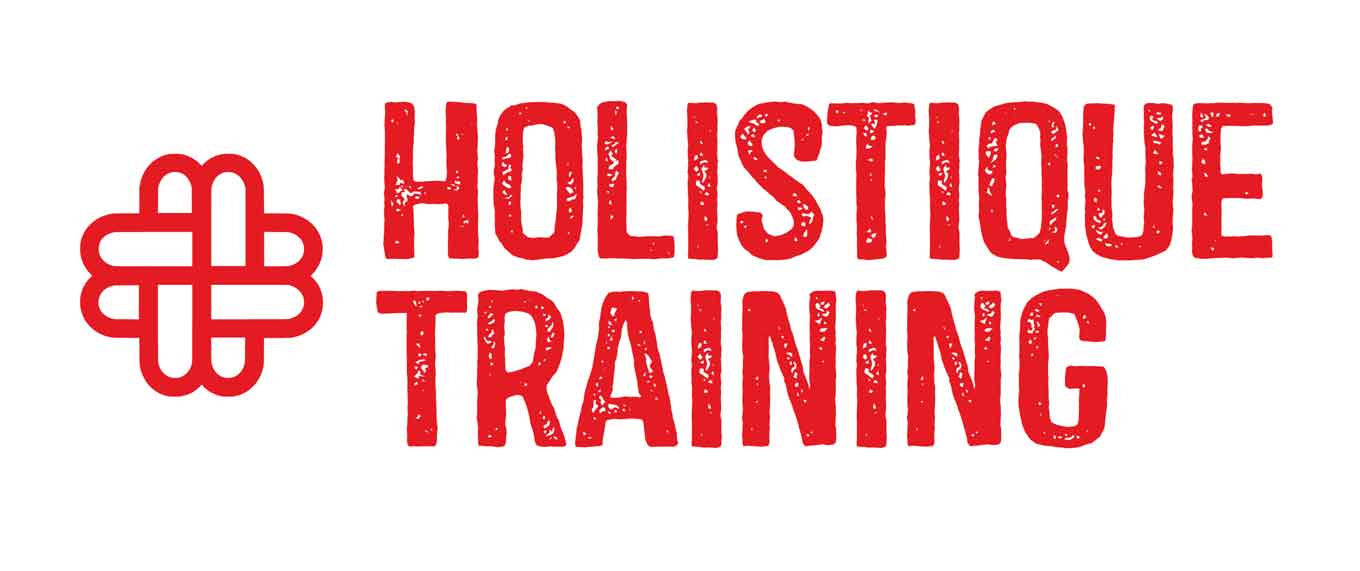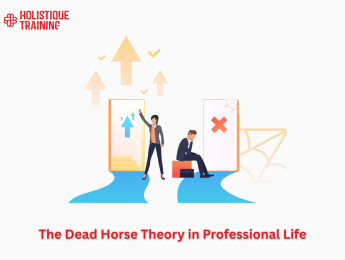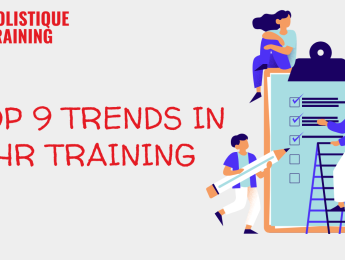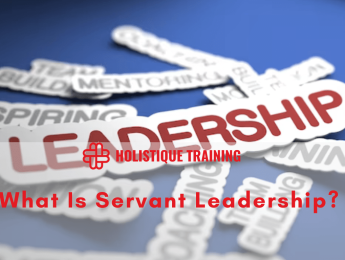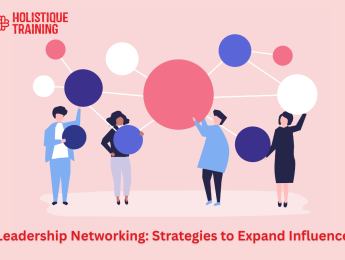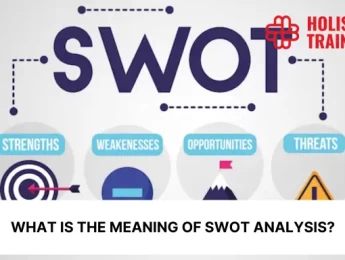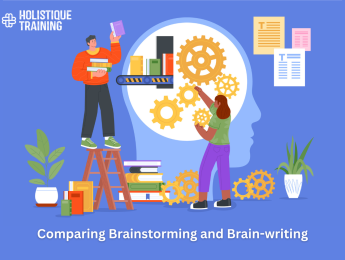- Table of Contents
- Introduction
- What is the Dead Horse Theory?
- Why Do We Stick to Dead Horses?
- 1. Sunk Cost Fallacy
- 2. Fear of Change
- 3. Groupthink and Conformity
- 4. Identity and Ego
- 5. Lack of Accountability
- 6. Cognitive Dissonance
- 7. Social Pressure and Reputation
- 8. Illusion of Control
- The Consequences of the Dead Horse Theory at Work
- Stagnation and Reduced Innovation
- Wasted Resources
- Decreased Morale and Engagement
- Erosion of Trust and Credibility
- Missed Opportunities for Growth
- Negative Impact on Customer Satisfaction
- Increased Stress and Burnout
- Reputation Damage
- Inflexibility in Decision-Making
- Negative Impact on Team Dynamics
- Cultural Resistance to Change
- Diminished Competitive Edge
- How Does the Dead Horse Theory Apply to Professional Life?
- 1. Project Management
- 2. Career Development
- 3. Organizational Culture
- 4. Leadership Styles
- 5. Technology Adoption
- How Do You Break the Cycle as a Leader?
- 1. Encourage Open Dialogue
- 2. Embrace a Growth Mindset
- 3. Conduct Regular Reviews
- 4. Set Clear Goals and Metrics
- 5. Model Adaptability
- 6. Celebrate Learning from Failure
- 7. Foster Accountability
- Conclusion
Introduction
Navigating the complexities of professional life often requires us to confront uncomfortable truths about our practices, beliefs, and strategies. One such truth is encapsulated in the metaphor of the "dead horse theory." This concept serves as a powerful reminder of how individuals and organizations can become entrenched in outdated methods, ideas, or projects, despite clear evidence that they are no longer viable. This blog post will explore the essence of the dead horse theory, why we cling to ineffective practices, the repercussions of this mindset in the workplace, its implications for professional growth, and strategies for leaders to break free from this cycle. By understanding and addressing the dead horse theory, we can foster a more dynamic and innovative work environment.
What is the Dead Horse Theory?
The dead horse theory is a metaphorical concept that illustrates the tendency of individuals and organizations to continue investing time, resources, and energy into projects, ideas, or practices that have proven ineffective or obsolete. The imagery of a dead horse evokes a vivid picture: no matter how much one might wish to ride it, the horse is no longer alive and cannot be revived. This theory suggests that rather than acknowledging the futility of their efforts and moving on, people often choose to persist in their endeavors, hoping for a different outcome.
At its core, the dead horse theory highlights a psychological bias known as the sunk cost fallacy, where individuals justify continued investment based on previous commitments, rather than evaluating the current situation objectively. This theory can manifest in various forms, such as stubborn adherence to outdated technologies, ineffective management practices, or failing projects. Recognizing this tendency is the first step toward fostering a culture of adaptability and innovation in professional settings.
Why Do We Stick to Dead Horses?
Several psychological and social factors contribute to our inclination to stick to dead horses. Understanding these motivations is crucial for leaders and team members alike, as it sheds light on the barriers to change within organizations.
1. Sunk Cost Fallacy
One of the primary reasons people cling to dead horses is the sunk cost fallacy. This cognitive bias leads individuals to continue investing in a failing endeavor because they have already committed significant resources—time, money, or effort. The fear of losing these investments often outweighs the rational assessment of the current situation. For instance, a company may continue funding a failing product line simply because it has already poured millions into development, even when market research indicates that consumer interest has waned. This phenomenon is not limited to financial investments; emotional investments play a significant role as well. Employees may feel personally attached to a project, believing that abandoning it would mean admitting failure on their part.
2. Fear of Change
Change can be daunting, and many individuals prefer the comfort of familiarity, even if it is ineffective. This fear can stem from various sources, including anxiety about the unknown, concerns about personal job security, or the potential for increased workload during a transition. The prospect of altering established routines can lead to resistance, causing teams to cling to outdated practices rather than embracing new, potentially more effective approaches. Furthermore, the fear of change can be compounded by previous experiences where changes led to negative outcomes, reinforcing the belief that sticking to the status quo is safer.
3. Groupthink and Conformity
In professional settings, group dynamics can significantly influence decision-making. Groupthink occurs when the desire for harmony and conformity within a team leads to poor decision-making outcomes. When everyone in a team is committed to a failing project, dissenting voices may be silenced, and individuals may feel pressured to conform to the prevailing mindset. This phenomenon can perpetuate the dead horse theory, as teams collectively ignore evidence that suggests a need for change. The desire to maintain social cohesion can stifle innovation and discourage individuals from voicing their concerns or proposing alternative solutions.
4. Identity and Ego
For many professionals, their work is closely tied to their identity and self-worth. Admitting that a project or idea is a failure can feel like a personal indictment of one's abilities or judgment. As a result, individuals may double down on their efforts to salvage a dead horse in an attempt to preserve their self-esteem and professional reputation. This emotional attachment can cloud judgment and hinder objective evaluation of the situation. The fear of being perceived as a failure by peers or superiors can create a cycle where individuals are unwilling to confront the reality of a situation, leading them to cling to ineffective practices.
5. Lack of Accountability
In organizations where accountability is lacking, individuals may feel less compelled to address ineffective practices. If there are no clear consequences for failing to adapt or innovate, team members may continue to invest in dead horses without fear of repercussions. This lack of accountability can create a culture where mediocrity is tolerated, further entrenching outdated practices. When leaders do not set clear expectations or fail to hold team members accountable for their contributions, it can lead to complacency and a reluctance to challenge the status quo.
6. Cognitive Dissonance
Cognitive dissonance occurs when individuals experience discomfort due to conflicting beliefs or values. When employees invest significant time and effort into a project, they may struggle to reconcile the reality of its failure with their initial commitment to it. To alleviate this discomfort, they may convince themselves that the project still holds potential or that success is just around the corner. This mental gymnastics can lead to a continued investment in a dead horse, as individuals seek to justify their past decisions rather than confront the uncomfortable truth of the project's ineffectiveness.
7. Social Pressure and Reputation
In many professional environments, social pressure can play a significant role in decision-making. Individuals may feel compelled to support a project or idea to align with the views of their colleagues or superiors, even if they privately recognize its shortcomings. This pressure can be particularly pronounced in hierarchical organizations, where junior employees may hesitate to challenge the decisions of their leaders. The desire to maintain a positive reputation within the organization can lead individuals to support failing initiatives rather than advocate for change.
8. Illusion of Control
Another reason individuals may stick to dead horses is the illusion of control. People often believe they can influence the outcome of a failing project through sheer willpower or effort. This belief can lead them to invest even more resources into a dead horse, convinced that they can turn things around. This illusion can be particularly strong in high-stakes environments where success is highly valued, causing individuals to overlook clear signs that a project is no longer viable.
By understanding these underlying motivations, organizations can begin to address the root causes of the dead horse theory and foster a culture of adaptability and innovation. Recognizing the psychological barriers to change is essential for leaders who wish to create an environment where team members feel empowered to challenge ineffective practices and pursue new opportunities for growth.
The Consequences of the Dead Horse Theory at Work
The consequences of adhering to the dead horse theory can be profound, affecting not only individual employees but also the organization as a whole. Understanding these repercussions is essential for fostering a culture of innovation and adaptability.
Stagnation and Reduced Innovation
When organizations cling to outdated practices, they risk stagnation. Innovation thrives in environments where experimentation and adaptability are encouraged. By focusing on dead horses, teams may miss opportunities to explore new ideas, technologies, or methodologies that could drive growth and improvement. This stagnation can lead to a competitive disadvantage, as organizations fail to keep pace with industry changes and evolving consumer demands. For example, companies that resist adopting new technologies may find themselves outperformed by more agile competitors that embrace change. Over time, this stagnation can create a culture resistant to innovation, where employees become disengaged and disillusioned.
Wasted Resources
Continuing to invest in failed projects or practices leads to wasted resources—both financial and human. Time spent on ineffective initiatives could be better allocated to more promising endeavors. Moreover, the opportunity cost of pursuing dead horses can be significant, as organizations forgo potential revenue and growth by not redirecting their efforts toward more viable projects. For instance, a marketing team that continues to promote a product that has lost market relevance may miss out on launching a new product that could capture consumer interest. This misallocation of resources can strain budgets and limit the organization's ability to invest in future opportunities.
Decreased Morale and Engagement
Employees who recognize that their organization is stuck in a cycle of dead horses may experience decreased morale and engagement. When team members see their efforts directed toward futile endeavors, they may become disillusioned and disengaged from their work. This lack of motivation can lead to higher turnover rates and difficulty attracting top talent, further exacerbating the organization's challenges. Employees want to feel that their contributions matter and that they are part of a forward-thinking organization. When they perceive that leadership is unwilling to confront ineffective practices, it can lead to frustration and a sense of helplessness.
Erosion of Trust and Credibility
A culture that tolerates the dead horse theory can erode trust and credibility within the organization. When leaders fail to address ineffective practices, employees may question their judgment and decision-making abilities. This erosion of trust can hinder collaboration and communication, as team members become hesitant to share ideas or voice concerns for fear of being dismissed. Trust is a crucial component of effective teamwork, and when it is compromised, it can lead to silos within the organization, where departments operate independently rather than collaboratively. This lack of cohesion can further perpetuate the cycle of clinging to dead horses, as teams become isolated in their efforts.
Missed Opportunities for Growth
Organizations that cling to dead horses often miss out on valuable opportunities for growth and innovation. By failing to pivot when necessary, they may overlook emerging trends, technologies, or market demands that could drive success. This myopic focus on the past can hinder long-term sustainability and adaptability in an ever-evolving business landscape. For example, a company that continues to invest in a declining market segment may miss the chance to explore new markets or customer segments that are ripe for development. Alarmingly,research indicates that a substantial number of S&P 500 companies could vanish within a decade if they do not adapt to changing trends, emphasizing the serious risk of business failure. This inability to recognize and seize opportunities can lead to stagnation and eventual decline.

Negative Impact on Customer Satisfaction
When organizations are preoccupied with ineffective practices, customer satisfaction can suffer. Products or services that do not meet customer needs or expectations can lead to dissatisfaction and erosion of brand loyalty. If a company continues to promote a product that no longer resonates with its target audience, it risks alienating customers and damaging its reputation. This negative impact on customer satisfaction can have long-term consequences, including loss of market share and diminished revenue. Notably, research fromMcKinsey indicates that implementing personalized approaches can enhance customer satisfaction by as much as 20% and boost conversion rates by 10-15%. In today's competitive landscape, customer feedback is crucial for driving innovation and improvement; ignoring it can result in a disconnect between the organization and its customers.
Increased Stress and Burnout
When teams are forced to invest time and energy into projects that are clearly failing, it can lead to increased stress and burnout. Employees may feel trapped in a cycle of futility, where their hard work does not yield meaningful results. This constant pressure can take a toll on mental health and well-being, leading to decreased productivity and higher absenteeism rates. The stress of working on dead horses can create a toxic work environment, where employees feel overwhelmed and undervalued. Organizations that fail to address this issue may find themselves facing not only low morale but also increased healthcare costs and turnover rates.
Reputation Damage
Organizations that consistently cling to dead horses may find their reputations tarnished in the industry. Stakeholders, including customers, investors, and potential partners, are likely to notice when a company fails to innovate or adapt. This reputation damage can manifest in several ways:
- Loss of Customer Trust: Customers expect companies to evolve and meet their changing needs. If a brand continues to push outdated products or services, it risks losing customer loyalty. Consumers may turn to competitors who are more attuned to market trends and customer feedback.
- Investor Confidence: Investors are keen on supporting organizations that demonstrate growth potential and adaptability. A company that is perceived as stagnant or resistant to change may struggle to attract investment, which can limit its ability to fund new initiatives or expand operations.
- Talent Acquisition Challenges: Top talent is often drawn to organizations known for innovation and forward-thinking practices. Companies that cling to dead horses may find it difficult to attract skilled professionals who seek dynamic work environments that offer opportunities for growth and development.
Inflexibility in Decision-Making
Organizations that adhere to the dead horse theory often develop a rigid approach to decision-making. This inflexibility can hinder the ability to respond to market changes or emerging opportunities. When teams are conditioned to follow established protocols without questioning their relevance, they may miss critical insights that could inform better decision-making. For instance, a company that relies solely on historical data to guide its strategies may overlook shifts inconsumer behavior or technological advancements. This lack of agility can lead to missed opportunities and an inability to pivot when necessary.
Negative Impact on Team Dynamics
The dead horse theory can create friction within teams, as differing opinions on project viability may lead to conflict. Team members who recognize the futility of certain efforts may become frustrated with colleagues who are still invested in them. This discord can disrupt collaboration and hinder effective communication, ultimately impacting overall team performance. When team dynamics suffer, it can lead to decreased productivity and a toxic work environment where employees feel unsupported and undervalued.
Cultural Resistance to Change
Organizations that embrace the dead horse theory often cultivate a culture resistant to change. Employees may become accustomed to the status quo, viewing change as a threat rather than an opportunity. This cultural resistance can lead to a lack of initiative among team members, who may hesitate to propose new ideas or challenge ineffective practices. Over time, this mindset can permeate the organization, creating a cycle where innovation is stifled, and employees feel discouraged from thinking creatively.
Diminished Competitive Edge
In a rapidly evolving business landscape, maintaining a competitive edge is crucial for long-term success. Organizations that continue to invest in dead horses risk falling behind competitors who are more willing to adapt and innovate. This diminished competitive edge can manifest in various ways, including decreased market share, lower profitability, and an inability to attract new customers. Companies that fail to recognize and pivot away from ineffective practices may find themselves at a significant disadvantage, struggling to keep pace with more agile competitors.
In summary, the consequences of adhering to the dead horse theory are far-reaching and can significantly impact an organization's success and sustainability. From stagnation and wasted resources to decreased morale and reputation damage, the repercussions of clinging to ineffective practices can hinder growth and innovation. To foster a culture of adaptability, organizations must recognize these consequences and take proactive steps to break the cycle. By encouraging open communication, promoting a growth mindset, and being willing to make tough decisions, leaders can steer their teams away from dead horses and toward a more dynamic and successful future.
How Does the Dead Horse Theory Apply to Professional Life?
The dead horse theory is not limited to specific industries or roles; it permeates professional life in various ways. Understanding its application in different contexts can help individuals and organizations recognize and address these patterns.
1. Project Management
In project management, the dead horse theory manifests when teams continue to pursue projects that are clearly failing. Whether due to budget overruns, missed deadlines, or lack of stakeholder interest, project managers must be vigilant in assessing the viability of their initiatives. Failing to do so can lead to wasted resources, decreased team morale, and ultimately, project failure.
2. Career Development
Professionals may find themselves clinging to roles or career paths that no longer align with their goals or interests. Fear of change or a desire to maintain the status quo can prevent individuals from pursuing new opportunities or advancing their careers. Recognizing when it is time to move on from a dead-end role is crucial for personal and professional growth.
3. Organizational Culture
The dead horse theory can permeate organizational culture, influencing how teams approach challenges and decision-making. A culture that tolerates outdated practices stifles innovation and adaptability, making it difficult for organizations to thrive in dynamic environments. Leaders must actively cultivate a culture that encourages experimentation and embraces change to combat this phenomenon.
4. Leadership Styles
Leaders play a pivotal role in shaping organizational behavior. Those who resist change or cling to outdated practices can perpetuate the dead horse theory within their teams. Conversely, leaders who embrace adaptability and encourage open dialogue create an environment where team members feel empowered to challenge the status quo and propose new ideas.
5. Technology Adoption
In an era of rapid technological advancement, organizations that resist adopting new tools and technologies risk falling behind. The dead horse theory can manifest in reluctance to invest in modern solutions, leading to inefficiencies and missed opportunities. Embracing innovation and being open to change is essential for staying competitive in today's fast-paced business landscape.
How Do You Break the Cycle as a Leader?
Breaking the cycle of the dead horse theory requires intentional effort and strategic leadership. Leaders must foster a culture of adaptability, encourage open communication, and promote a willingness to challenge the status quo. Here are several strategies to effectively break free from this cycle:
1. Encourage Open Dialogue
Creating an environment where team members feel comfortable sharing their thoughts and concerns is crucial. Leaders should encourage open dialogue about projects, practices, and ideas. This openness allows for candid discussions about what is working and what is not, enabling teams to identify dead horses and pivot when necessary.
2. Embrace a Growth Mindset
Leaders should cultivate agrowth mindset within their teams, emphasizing the importance of learning from failures and adapting to change. Encouraging team members to view challenges as opportunities for growth can help shift the focus away from clinging to dead horses and toward exploring new possibilities.
Aspect | Dead Horse Theory | Growth Mindset Theory |
Focus | Clinging to ineffective practices | Embracing change and learning |
Adaptability | Resistance to change | Encourages flexibility and adaptation |
Employee Morale | Decreased morale and engagement | Increases motivation and resilience |
Innovation | Stagnation in ideas and initiatives | Fosters creativity and new solutions |
Decision-Making | Poor judgment based on outdated practices | Data-driven decisions and continuous improvement |
3. Conduct Regular Reviews
Regularly assessing the progress and viability of projects is essential for identifying dead horses early on. Leaders should implement a system for conducting periodic reviews of initiatives, allowing teams to evaluate their effectiveness and make informed decisions about whether to continue, pivot, or abandon efforts.
4. Set Clear Goals and Metrics
Establishing clear goals and metrics for success can help teams stay focused on outcomes rather than getting lost in the process. Leaders should ensure that team members understand the desired results and regularly review progress toward these goals. If a project is not meeting expectations, it may be time to reassess its viability.
Metric | Description |
Innovation Rate | Percentage of new ideas or projects implemented |
Employee Engagement Score | Level of employee involvement and satisfaction |
Resource Allocation Efficiency | Ratio of resources redirected to productive initiatives |
Customer Satisfaction | Feedback scores reflecting customer contentment |
Turnover Rate | Percentage of employee retention over time |
5. Model Adaptability
Leaders must lead by example when it comes to embracing change and adaptability. Demonstrating a willingness to pivot when necessary and openly discussing the rationale behind decisions can inspire team members to adopt a similar mindset. When leaders model adaptability, it fosters a culture where change is viewed as a positive opportunity rather than a threat.
6. Celebrate Learning from Failure
Instead of stigmatizing failure, leaders should celebrate learning from mistakes. Recognizing that not every initiative will succeed can help shift the focus away from clinging to dead horses. By framing failures as valuable learning experiences, leaders can encourage teams to take calculated risks and explore new ideas without fear of judgment.
7. Foster Accountability
Establishing a culture of accountability is essential for breaking the cycle of the dead horse theory. Leaders should ensure that team members are held accountable for their contributions and that there are consequences for failing to adapt or innovate. This accountability encourages individuals to take ownership of their work and be proactive in addressing ineffective practices.
Conclusion
The dead horse theory serves as a poignant reminder of the dangers of clinging to outdated practices and ideas in professional life. By understanding the psychological and social factors that contribute to this tendency, individuals and organizations can work to break free from its constraints. Leaders play a crucial role in fostering a culture of adaptability, encouraging open dialogue, and promoting a growth mindset. By embracing change and recognizing when it is time to let go of dead horses, organizations can unlock their full potential, drive innovation, and thrive in an ever-evolving business landscape. Ultimately, the ability to identify and address dead horses is not just about avoiding failure; it is about creating a dynamic and resilient professional environment where growth and success can flourish.
